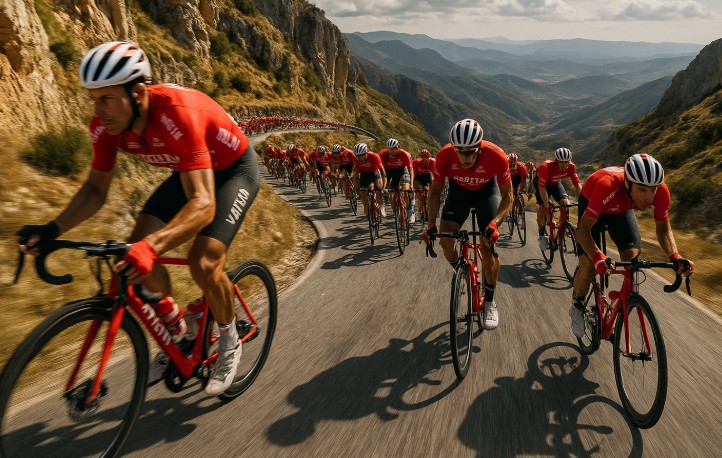The Vuelta a España—the final Grand Tour of the cycling calendar—is where late-season legs and iron-willed strategy collide. Unlike the Tour de France or Giro d’Italia, the Vuelta often becomes the proving ground for comeback riders, rising talents, and climbers who thrive in brutal gradients and September heat. Today, we’re breaking down the rider results Vuelta edition from a thematic standpoint—how riders succeed (or unravel), which stages define them, and what the Vuelta reveals about a cyclist’s development and competitive identity.
Why the Vuelta Creates Distinctive Rider Results
The Vuelta isn’t just the third Grand Tour of the year—it has a personality. Its steep mountain finales and technical roads create a unique biological and psychological test. Riders arrive here with one of three profiles:
-
Those targeting the Vuelta as their main objective
They come with peak conditioning specifically loaded for September. Think pure GC riders and elite climbers. -
Those using the Vuelta as redemption
Maybe they crashed out of the Tour. Maybe they never reached full form in the Giro. The Vuelta becomes their reset button. -
Young guns looking for a breakout stage win or strong overall placement
The Vuelta is famous for launching fresh talents onto the world stage.
These dynamics blend into a mix of aggression, unpredictability, and fascinating day-to-day performance shifts.
Climbing Results Define Elite Profiles
The Vuelta is notorious for its short but vicious mountain ramps—the kind where heart rate spikes fast, and power-to-weight ratios rule the day. Rider results here often highlight:
-
Explosive vs diesel climbers:
Some riders thrive on 20-minute punchy power, others on hour-long grinds. -
Consistency in fatigue:
A rider may win a mountain stage but lose minutes the next day. GC success demands repeated high-level climbing, not isolated brilliance. -
Altitude toughness:
Many high climbs push over 2,000m, and results often favor those physiologically adapted to thin air.
The Role of Team Dynamics in Vuelta Results
Behind every top-performing rider is a team strategy shaped by real-time tactical evolution. In this Grand Tour:
-
Domestiques are often more aggressive than in other races—since many teams give secondary riders freedom to chase stages.
-
Multi-leader strategies are common; teams frequently arrive with two GC options.
-
Late-stage alliances often emerge between riders from different teams, especially in breakaways.
In terms of results, this means the GC table often undergoes dramatic reshuffling in the final week.
Time Trials—Where Seconds Turn into Minutes
Unlike the Tour or Giro, the Vuelta’s time trials often appear well-placed to crack open the GC, rather than bookending it. The pattern we see:
-
Strong TT riders can leapfrog into podium contention.
-
Climbing-heavy riders must limit damage strategically.
-
The best GC contenders today are hybrid weapons—able to both climb and time trial.
The modern rider results Vuelta edition reinforces one trend: pure climbers who can’t TT rarely win anymore.
The Emotional and Psychological Factor
The Vuelta comes at the end of a long race calendar. Burnout is real. Motivation becomes the invisible wattage.
A few psychological drivers of performance:
-
Those hunting contracts for next season push harder.
-
Veterans sensing their final competitive window often find last-spark magic.
-
Rookies with nothing to lose launch fearless attacks.
This is why we see unpredictable rider results—underdogs taking stages, late-season surges, and occasionally a red-jersey battle that flips in the final days.
The Vuelta as a Career Turning Point
Some riders use the Vuelta to announce themselves to the world; others use it to resurrect a narrative. Over the decades, patterns show:
-
Riders who perform well in the Vuelta often carry momentum into the next season’s classics.
-
Young GC talents often earn leadership roles the following year.
-
Stage-hunters who succeed are frequently re-tasked with more aggressive roles in future races.
Final Thoughts
The rider results Vuelta edition always tell a deeper story than numbers alone. They illuminate resilience, adaptability, tactical intelligence, and above all—mental grit.
If you’d like, I can write a follow-up section with:
-
A fictional or archetypal rider-by-rider breakdown
-
A profile of the red-jersey winner’s performance traits
-
A deep dive into a specific dramatic Vuelta stage
-
Or a statistical interpretation of time gaps & stage wins
Just say the word—this topic is a treasure chest waiting to be opened.





